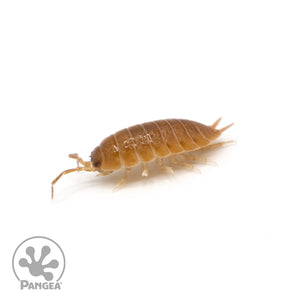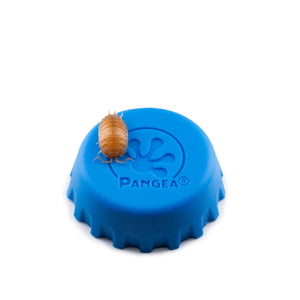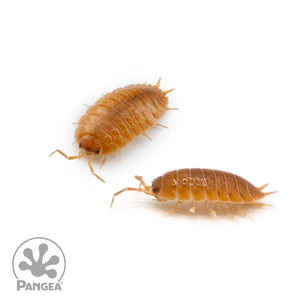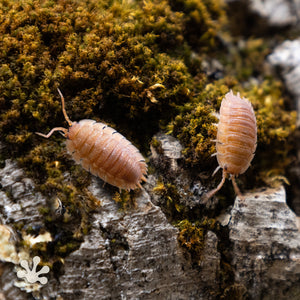Your Cart is Empty





Sold out
IMPORTANT ANNOUNCEMENT:due to carrier delays we cannot schedule live animal shipments between 11/20 - 12/5 and 12/18 - 1/5.Learn Why
Porcellio scaber 'Orange' Isopods
$11.99 - $59.99
Porcellio scaber 'Orange' Isopods
Origin
• Selectively bred morph, not found in wild populations
Environmental Preferences
• Temperature Range: 64–73°F (18–23°C)
• Humidity Preference: Medium to High (60–80%)
Physical Characteristics
• Average Adult Size: Up to 1.8 cm (~0.71")
• Solid orange coloration throughout the body
• Juveniles may appear lemon-yellow before developing deeper orange tones
• Hard, calcified exoskeleton
Diet
• Soft or rotting wood
• Leaf litter and decaying plant matter
• Calcium sources (e.g., cuttlebone, eggshell, PangeaCal Calcium)
• Protein (e.g., freeze-dried shrimp, minnows, fish pellets, dried insects)
• Commercial insect food (e.g., Pangea Roach & Cricket Food)
• Vegetables (e.g., carrots, zucchini, sweet potatoes, pumpkin, cucumber)
• Fruits (e.g., bananas, apples, watermelon, mango)
Note: Porcellio laevis and Porcellio scaber have high protein requirements and may bite reptiles if not provided with adequate supplemental protein.
Description
Porcellio scaber “Orange” is a vibrant, selectively bred morph of the common scaber, showcasing a pure orange coloration not found in wild populations. Their color can range from soft apricot to deep orange, with juveniles sometimes expressing lemon-yellow tones. Their hard bodies, adaptability, and prolific nature make them one of the most beginner-friendly morphs available.
Master Culture
For successfully setting up a master culture setup of isopods we recommend using 6 qt - 32 qt plastic shoebox tubs. Locking tubs are optional but provide added security. Creating a series of small holes on alternating sides of the container will help to achieve healthy flow and reduce mold. Adding 1-3 inches (more for burrowing species) of pre-soaked Pangea ABG Substrate will provide a suitable substrate. Adding Pangea Sphagnum Moss, Pangea Leaf Litter Decor (the more the better), and pieces of wood or cork bark will help provide multiple layers for isopods to inhabit and feel safe. Mist culture as needed.
*Co-habitation amongst separate species of Isopod is not recommended.
*This animal can only be shipped to theContiguous US, except LA, OR, and FL because of state regulations.





